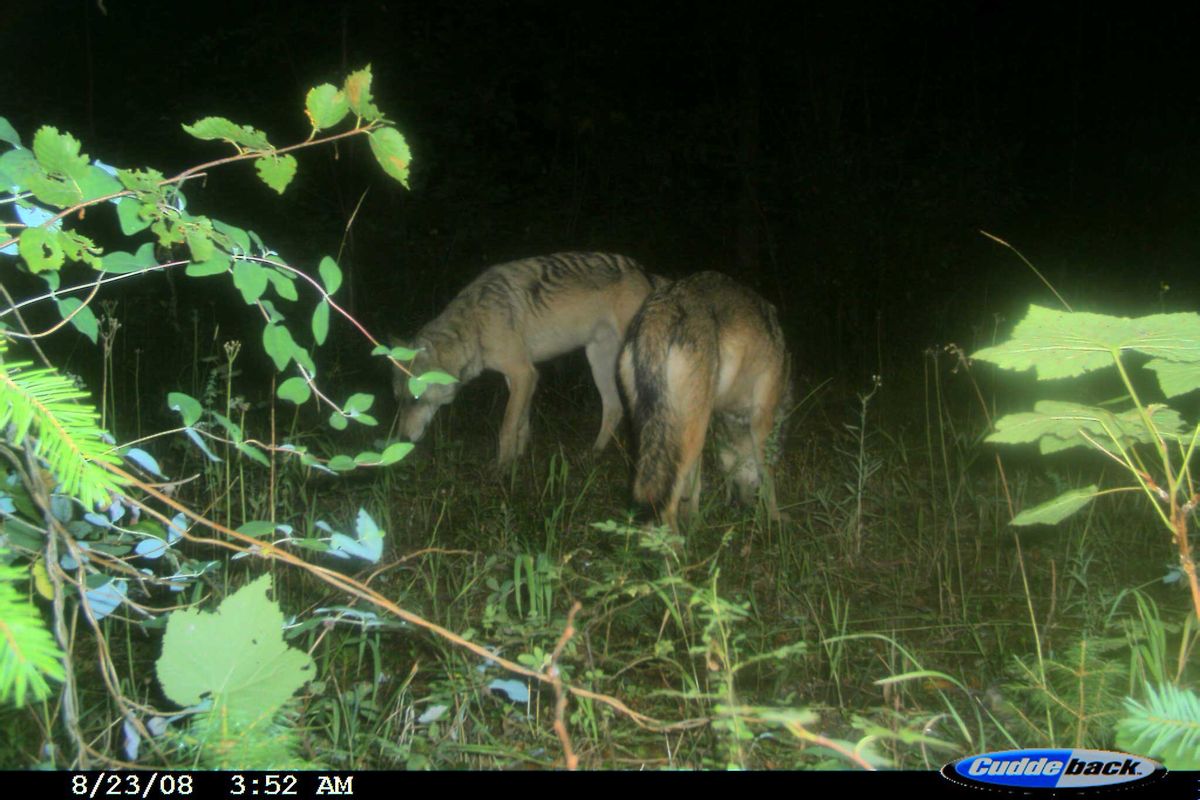State may have second wolf pack

Acting on a tip from loggers, wildlife biologists have confirmed the presence of a wolf pack with pups in northeast Pend Oreille County.
At sunrise Friday, Scott Fisher played digital recordings of howling in the remote territory where the wolves had been spotted. An adult wolf howled back, and at least three yappy pups chimed in.
“It was the best day of work I’ve ever had,” said Fisher, a regional biologist for Washington Department of Natural Resources. “The (adult) wolf was about 150 feet away, back in the brush. He was so close that you could hear his trachea rattling. He just howled and howled.”
Heavy timber and brush concealed the pack. Fisher and a colleague set up motion-triggered cameras in the area, with hopes of capturing the wolves on film.
The pack is the second documented in Washington state. Last summer, a breeding pair of wolves was radio-collared in western Okanogan County.
Gray wolves were hunted to near-extinction in the continental United States by the 1930s. But as wolf populations have rebounded in Idaho, Montana and Wyoming through federal recovery efforts, wolf sightings in Washington have increased.
Fisher wasn’t surprised to find a pack in Pend Oreille County. Since 2007, remote cameras have captured images of a silvery male wolf with brindle markings on its back. Last year, Fisher spotted two wolves on film, and in late May, a lactating female showed up in the pictures. DNA-testing of hair samples collected near the camera also indicated the presence of a male wolf with genetic ties to wolf packs in southern Alberta and northern Montana.
Biologists used wolf urine to lure animals to the camera site. But the wolf images stopped appearing in late May. The loggers’ tip last week sent Fisher and his colleagues to a site about five miles from the camera, where they heard the adult and pups.
“Getting a credible tip saved us so much time and work,” said Fisher, who encourages members of the public to report wolf sightings.
The next step is to put GPS collars on the adults so their movements can be tracked, said Dana Base, a district biologist with the Washington Department of Fish and Wildlife. The adults will be captured with padded leg-hold traps to prevent injuries, he said.
For the pack’s protection, the wolves’ location isn’t being disclosed. Federal officials are investigating the possible poaching of a gray wolf from the pack in Okanogan County. In December, police found an unprocessed pelt of a gray wolf inside a package being shipped from Omak to Canada.
That investigation continues and no charges have been filed, said Joan Jewett, a U.S. Fish and Wildlife spokeswoman in Portland, Ore.
Fish and Wildlife is drafting a state conservation and management plan for gray wolves, which will be available for public comment later this year. The plan is being developed by a 17-member citizen’s working group composed of wolf conservation advocates, ranchers and hunters.
Wolves were recently removed from the federal endangered species list in the eastern third of Washington, including Pend Oreille County, but remain federally listed in the western two-thirds of the state. The federal delisting is being challenged in court.
The state plan will guide future management of wolves in Eastern Washington, Base said.
Northeastern Washington has a prey base of deer, elk, moose and snowshoe hares, which can support wolf packs, he said.
“It will be a balancing act,” Base said. “If wolves start showing up in backyards in Ione or Newport, we’re not going to be able to tolerate that. If they start habitually killing livestock, we won’t be able to tolerate that, either.”